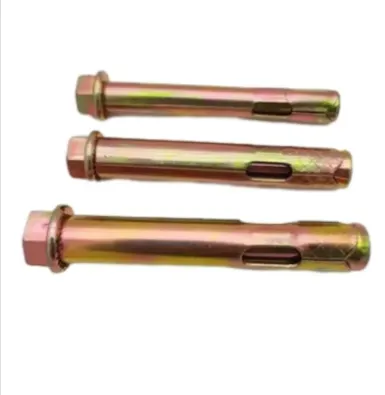जनवरी . 06, 2025 19:01 Back to list
anchor bolt sizes
Anchor bolts serve as a critical component in many structural projects, providing the necessary stability and support for structures ranging from simple residential buildings to complex commercial setups. Understanding the nuances of anchor bolt sizes is essential for selecting the right type that ensures durability and compliance with engineering standards.

The size of an anchor bolt generally refers to its diameter and length. These dimensions are crucial as they determine the bolt's load-bearing capacity. Experienced engineers will acknowledge that the diameter typically ranges from 1/4 inch to 1 inch, while length can vary significantly based on the application, often extending anywhere from a few inches to several feet. This variation allows for tailored solutions that match specific structural requirements.
It's imperative to choose the bolt size considering the kind of load it will support. Shear and tensile load considerations often dictate the diameter. For instance, a 1/2 inch bolt might suffice for minor structural elements, but larger loads require diameters exceeding 3/4 inch. Consulting load requirement charts early in the planning stages helps in selecting appropriately sized bolts that align with project demands.

Expertise in material selection also underlines the importance of matching anchor bolt size with environmental conditions. For structures in weather-intensive regions, stainless steel or galvanized bolts are recommended to combat corrosion. Meanwhile, in protected indoor settings, carbon steel may be suitable and economically feasible. Trusted suppliers offer a variety of materials, giving project managers and engineers options that meet both size and durability standards.
anchor bolt sizes
In practice, the installation technique complements the size of anchor bolts. Larger, longer bolts might necessitate deeper drilling into substrates, affecting not only the installation speed but also the cost. Efficiency in installation ensures that the structural integrity is maintained without excessive financial outlay. Drilling precision and accurate setting techniques are vital to derive the maximum potential from each bolt, no matter its size.
From a regulatory standpoint, observing standards issued by organizations like ASTM International ensures compliance with safety and quality metrics. Different projects may demand adherence to specific guidelines detailing not just size, but also material and coating requirements, adding layers of complexity that necessitate professional insight.
Project leaders often rely on trusted engineers who provide authoritative guidance on specification sheets, critical for aligning design intent with practical execution. Reputable manufacturers often supply detailed dimensions and performance charts, aiding in informed decision-making during the procurement phase. Their commitment to transparency enhances the credibility of their products, fostering trust among contractors and engineers.
In conclusion, understanding anchor bolt sizes is a cornerstone of ensuring the structural soundness of constructions. Real-world experience dictates a careful balance of size, material, and installation practices, all while adhering to regulatory specifications. By leveraging expert knowledge and authoritative resources, one can navigate the complexities of bolt selection, ultimately leading to safer, more reliable structures.


